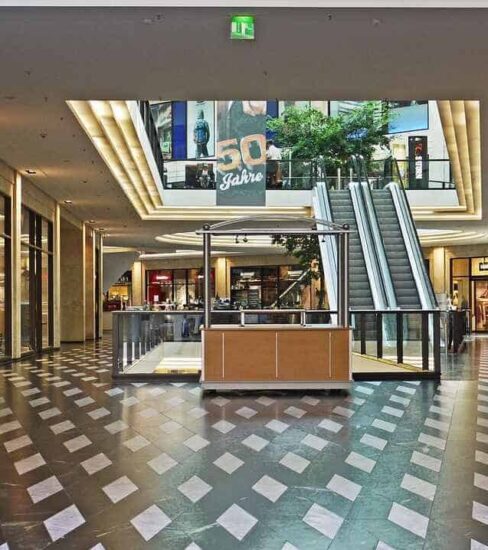Ever since the pandemic struck in 2020, the retail sector has taken a severe beating in terms of sales and revenue metrics. Fewer people visit stores, and most customers have begun to warm up to the idea of immersive shopping experiences online. However, despite the current challenges in retail mangement, things are looking up.
While 31% of brands hope to expand their physical retail footprint in 2023, 55% of those interviewed expressed concerns about winning foot traffic.
With the above and the following retail statistics in mind, it became clear that technology will continue transforming the retail industry. Let us look at the top 5 retail technology trends that will dominate the sector in 2024.
1. Omnichannel customer experiences will be necessary.
Consumers increasingly use online and offline interactions with products before making a purchase decision. 47% of consumers would shop at a store if the company had a local presence. Another 54% of consumers revealed that while they would like to look at products online, they would visit the store to purchase them. Retail owners should consider this and ensure that their point-of-sales (POS) device is well-equipped to handle online and offline transactions.
Omnichannel CRM solutions bring the best of both worlds and help customers to pick up from where they have left off. They can add a product to the cart on your website and make the payment when they visit your store for a smoother and synchronized shopping experience. You can also create hybrid customer experiences by intertwining different loyalty programs based on insights from your inventory management tool or ERP.
In short, focus on using a POS and ERP ready to bring hybrid and omnichannel experiences to your customers.
2. Use technology to make transparent environmental, social, and governance (ESG) policies.
Although not necessarily related to technology, you must reevaluate your carbon footprint and social justice policies. Gen Z customers tend to be more belief-driven and closely evaluate if a brand aligns with their beliefs. In short, you must ensure that your products and business operations are centered around ethics, sustainability, and reducing carbon footprint.
Thankfully, all these are measurable metrics that technological tools can track. And tools like ERP help you quantify these factors and present them to your customers in a way that is appealing to them. For instance, a robust retail ERP solution can help you track your energy consumption and minimize it.
While this enables you to comply with regulations, it can be an excellent opportunity to showcase to your customers on social media or elsewhere in your marketing collateral. The more transparent you will be with your ESG policies, the better it is for your business.
3. Personalize your customers' consumer journey
Thanks to artificial intelligence (AI) and machine learning (ML), sales and marketing algorithms have gotten more intelligent than ever before. Making product recommendations based on customers' unique behavioral and socio-demographic metrics is now easier. Personalization of marketing and sales communication will be of utmost importance in 2024.
While e-commerce stores picked on this trend much earlier, retail owners must adopt a personalized sales and marketing approach. CRM and ERP tools that are enabled with AI and ML can help you personalize everything at scale.
Integrating AI-enabled POS and ERP tools will be central to retail success, from upselling and cross-selling to providing personalized after-sales support.
4. Consider implementing immersive experiences and learn more about the metaverse.
The metaverse, which includes immersive experiences enabled by virtual reality (VR) and augmented reality (AR), has generally transformed online experiences. Many people describe the metaverse as the future of the internet. Nike, Adidas, and other companies have already dabbled with the metaverse, allowing customers to experience products with the help of VR headsets and immersive experiences.
Although metaverse may still be out of reach for most brick-and-mortar companies, it is something you should consider. You can start by reading about how non-fungible tokens (NFTs), cryptocurrency, and metaverse real estate are transforming the world as we know it.
It also makes sense to start building your sales and marketing policies around these emerging technologies, as most consumers expect immersive experiences with time.
5. Implement cashless transactions with the help of a robust POS solution
A casual observation of global trends will reveal that most societies are moving towards cashless transactions. In addition, consumers are free to pay whenever and however they like. These three trends are the most popular at the moment when it comes to retail:
Buy-online-pickup-in-store (BOPIS) - In this scenario, a customer looks at products on your website or interacts with them if you have enabled immersive experiences with the help of metaverse-based technologies. The customer makes the purchase online through the online checkout process and arrives at one of your stores to pick up the product at their convenience.
Buy-online-return-in-store (BORIS) - Online shopping tends to be impulsive, and customers' expectations of products may differ from what they receive. BORIS helps customers buy online, receive the product, and then return it to the nearest store if they don't want it anymore. This is subject to your return and refund policies, of course.
Buy-online-pickup-at-curbside (BOPAC) - BOPAC is a suitable fulfillment option during lockdowns and when social distancing is necessary. As many people are still wary of shopping in-store, you can offer those who purchase online to pick up their products at the curbside.
Of course, all these fulfillment options require you to have robust retail POS and ERP systems in place.
Start using future-proof POS and ERP systems
There have been many changes in how people shop for products in recent years. Although many switched to online shopping, others have returned to stores and expect to shop at physical locations as long as safety precautions are followed. However, technological transformation is necessary to make retail businesses wade through 2024 and beyond. In summary, the top five technology trends in the domain of retail include:
1. Implementing omnichannel commerce infrastructures
2. Using technology to reduce carbon footprint and put ESG policies in place
3. Giving importance to personalizing the consumer journey
4. Learn more about the metaverse and implement immersive experiences
5. Upgrade POS systems to make cashless transactions more feasible
Although many new technologies affect the retail industry, Priority's comprehensive Retail management suite is a robust, scalable, and flexible solution that helps future-proof retail operations.


